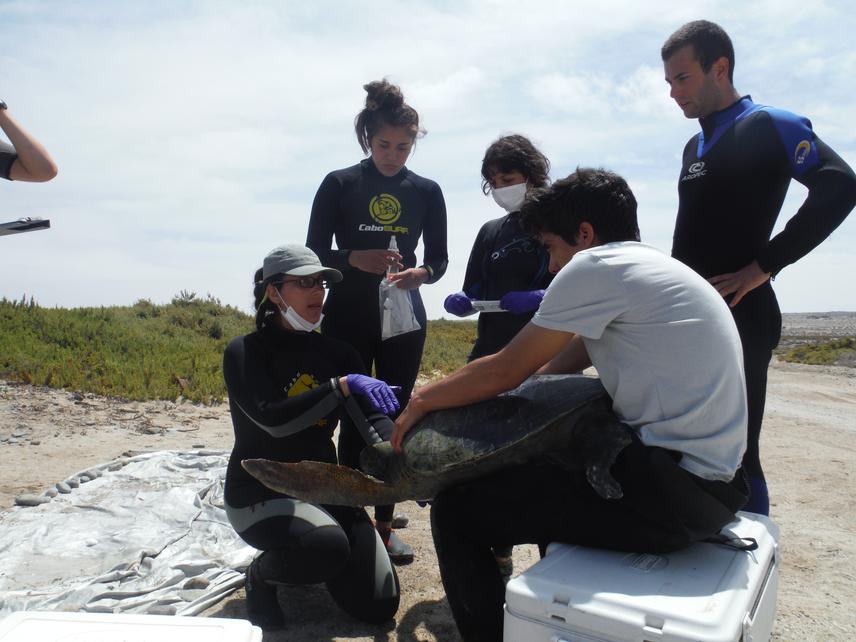Rocio Álvarez Varas
Other projects
15 Sep 2021
Population Genomics and Adaptation of the Black Turtle in the Pacific Ocean: Management and Conservation Implications
26 Jun 2025
Food Subsidies and Mercury Pollution in Green Turtles (Chelonia mydas) of Rapa Nui: A One Health Approach to Environmental and Animal Health
Determine the importance of sea grass in black turtle’s diet, raise awareness and involve surrounding communities and establish along these communities, sustainable economic proposals.

In order to protect black sea turtles (Chelonia mydas) at Salado Bay we are going to develop two kind of activities:
1) research studies
2) education and outreach program.
Research is going to consist mainly in stable isotope analysis. We are going to sample blood, skin and carapace of Salado Bay’s black sea turtles for each season of the year. This will allow us to assess the importance of an endangered sea grass species in black sea turtle’s diet. Is important to acknowledge that sea grasses have been identified as incubators of larval stages of different marine wild species in other parts of the world, acting as productivity enhancers of marine ecosystems. Thus, the importance of this study.
On another hand, we are going to work with local communities making surveys and workshops to fishermen unions of the study area, gathering by this mean information about marine ecosystem resources and anthropic interactions with black sea turtles. Additionally, our NGO is going to make educational talks at public schools of surrounding localities, in order to raise awareness of black sea turtle conservation.
All the information generated in this project is going to support our aim to protect Salado Bay as a conservation priority area, when discussing this issue with Chilean Governmental Environmental Agencies. Therefore, our efforts are addressed to provide Salado Bay with a formal protection category by the Chilean Government, ensuring by this mean black sea turtles survival and welfare.